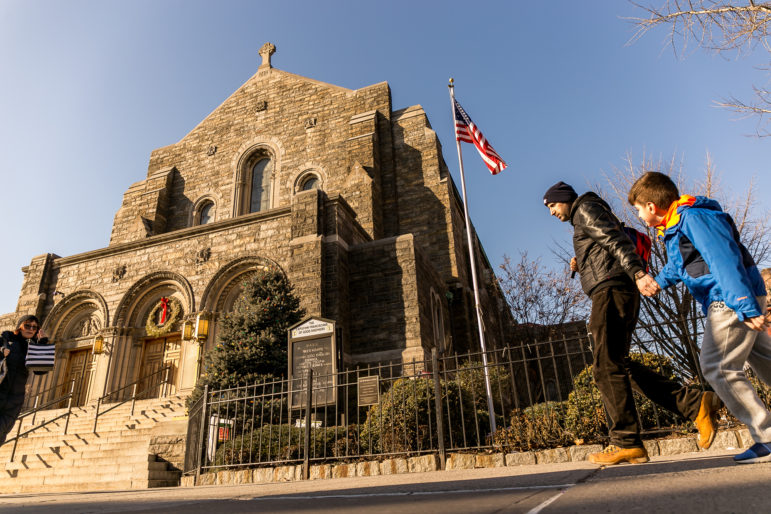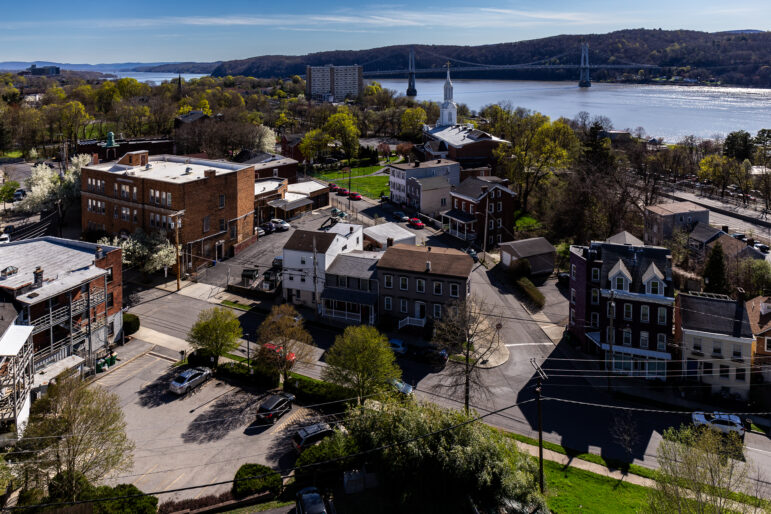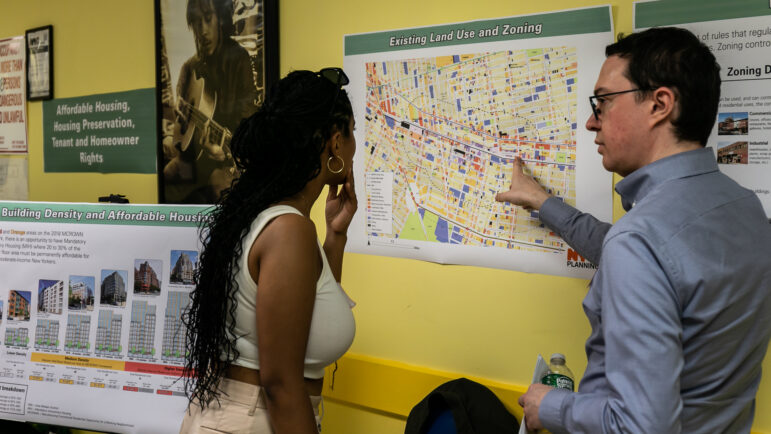The number of newly arrived immigrants now in the city’s care is around 64,000, down from more than 69,000 in mid-January—what City Hall has attributed in part to shelter deadlines. A bill in the City Council would end the controversial policy, which critics say has forced people into precarious situations: sleeping on the streets, on the floors of churches and in unsafe settings.
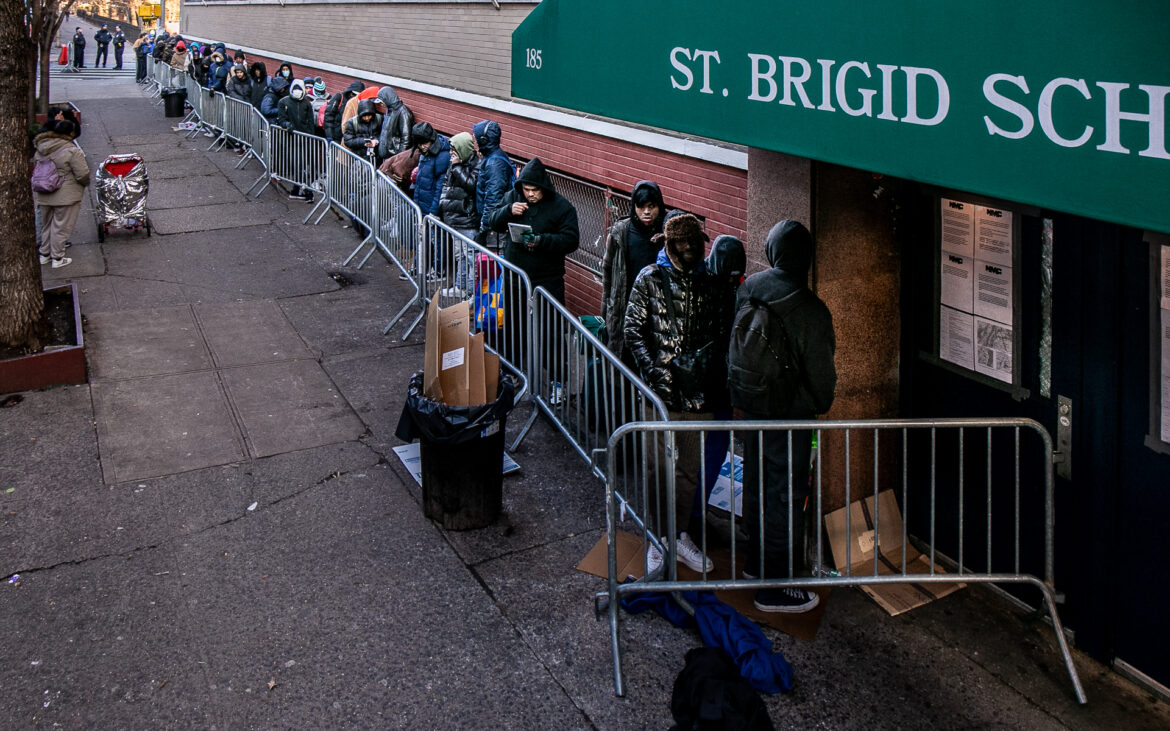
Adi Talwar
Migrants lined up to reapply for shelter at the city’s reticketing center in the East Village on Jan. 8, 2024.The number of newly arrived immigrants in the city’s care is now around 64,000, officials testified before the City Council Friday, down from more than 69,000 in mid-January—what City Hall attributed, in part, to its controversial 30- and 60-day shelter deadlines.
But while Mayor Eric Adams says the limited shelter stays are intended to help new arrivals take “the next step in their journey,” the administration also admits that it isn’t tracking where people go after they leave the system.
And critics of the policy worry it’s forcing migrants into precarious situations: sleeping on the streets, on the floors of churches or in unsafe settings, as evidenced by an incident this week in which the city evacuated a Queens basement storefront where an estimated 70 people had allegedly been staying.
“The mayor brags that shelter evictions have reduced the number of people in the city’s care, ignoring the obvious question: where are people who are forced out of the shelter system ending up?” Brooklyn City Councilmember Shahana Hanif said at a hearing Friday.
“You’re trying to make things as untenable as possible for these folks so they leave, and we are certainly witnessing some of that,” she added later on, addressing two administration officials.
Hanif is the main sponsor of a bill that would prohibit the city from imposing restrictions on the length of homeless shelter stays, an effort to halt the 30- and 60-day notices for immigrants that the Adams administration began issuing to adults in July, and to families with children beginning in January. Similar legislation has also been introduced by state lawmakers in Albany.
Since the spring of 2022, 179,000 immigrants have come to New York, including some sent on buses as part of a political stunt on the part of Republican governors in states along the border.
In response, the city has opened 216 emergency shelter sites and spent approximately $3.77 billion on the effort, according to officials, and the Adams administration has maintained in recent months that it no longer has the space or resources to continue doing so.
“We have to make hard choices, and complicated choices,” Molly Schaeffer, director of the NYC Office of Asylum Seeker Operations, testified to councilmembers Friday, saying the shelter deadline policy “has helped ensure that we have space and the staff capacity to give people what they need in that first 30 days.”
A City Hall spokesperson told City Limits earlier this week that it has so far issued shelter deadlines to 69,200 immigrant adults in the system, and to 9,100 families with children.
Officials testified to the Council Friday that just under a quarter of adults who've seen their shelter stays expire have reapplied for another placement, while half of the families with kids who've been evicted have returned. Families with children make up the vast majority of asylum seekers in the city's care, accounting for 78 percent of those in shelter on the last night of January.
So far, no families with kids who've sought another shelter placement after their time was up have been turned away, officials say. But the same can't be said for adult immigrants, hundreds of whom line up each day on the sidewalk outside the city's "reticketing center" in the East Village for a shot at another bed.
"It is very cold outside, and 30 days in the shelter is not enough," one man testified to councilmembers at Friday's hearing. Speaking in French through a translator, he said he's been in New York City for five months and has stayed in four different shelters as a result of the deadlines.
Adults who reapply for shelter but don't land a spot right away are directed to one of five overnight "waiting rooms" across the city, including some set up in churches. "We only sleep on the floor and there are no blankets or anything like that," the man told councilmembers.
Some people, he added, spend the night walking the streets and collecting recyclables to trade in for change, and to kill time until the reticketing center opens again in the morning.
“In the shelters per se, we don't get much help. We get a lot of help from outsiders, basically people who just come into the shelters, bring us food,” he said.
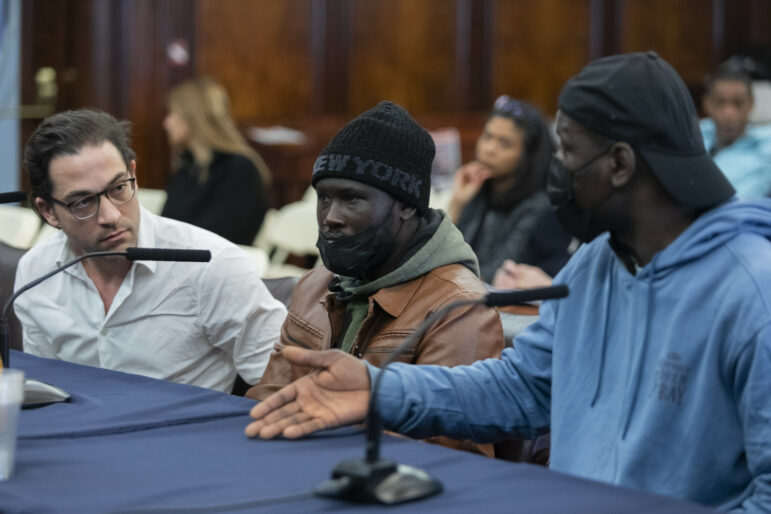
Emil Cohen/NYC Council Media Unit
Asylum seekers testified before the City Council Friday about their experiences with shelter deadlines. "It is very cold outside, and 30 days in the shelter is not enough," one said in French through a translator.Lawmakers at the hearing questioned the efficiency of the shelter deadlines. According to Schaeffer, 76 percent of immigrants in the system leave within a month.
"So if people are already leaving in large numbers before the 30 days is up, then you don't really need to have the mandate there," said Councilmember Althea Stevens, who represents the South Bronx.
"How is this helpful?" she asked administration members. "It kind of seems like a redundant of services, if we've got people cycling in and out...we're re-administering people over and over again."
Others questioned the impact of frequent shelter moves on children's education. Schaeffer said that 90 percent of the families with kids who had to leave their placement after 60 days, and who reapplied for another spot in the system, kept their children in the same schools they were enrolled in before their deadline expired.
But she was not able to immediately provide lawmakers with figures for families with school-aged kids who've been evicted from shelter and opted not to apply for another placement, saying she would need to consult with the Department of Education.
"We don't track when people leave our care where they're going," she said.
To reach the reporter behind this story, contact Jeanmarie@citylimits.org


